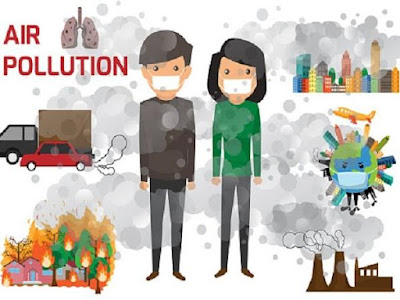Why is Air Pollution Worse during winter?
Yes, it is a myth that the level of air pollutants
increase during summer. Air Pollution is actually worse during winter. It is
generally misunderstood by the people of urban areas may be due to suffocating environment
they face every day. In reality, it is in winter when earth’s level of air is affected
by pollutants. Globally it has been found that during winters more fuels and
biomass are burnt. However, industrial pollution remains constant throughout
the year. Perhaps people also believe that summer air quality is worse because
of the long day hours and ultraviolet radiation. It becomes more suffocating in
a sun-baked concrete weather. People may also believe this because of the high
temperature of summer which feels like something huge and bad occurring above
the earth layer. When winter arrives these cities can expect air that is more
than twice as polluted as during the spring and summer.
In a lower income country where they burn garbage
and coal for heating, the levels of toxic gas like carbon monoxide increases significantly.
The increase of toxins in the air combined with the temperature inversion
creates the smog that they breathe every winter. And winter is the season
people burn woods, some people use plastic and tires to comfort them from cold.
The main reason for winter pollution is that during
winter, inversion condition takes place in the atmosphere. A temperature
inversion is where the air temperature rises with altitude. Inversion condition
in short means that increase in height and the temperature increases, this
condition usually breaks with the sunrise when the earth again becomes warm and
the temperature starts falling with altitude. Inversion of temperature does not
let pollutants escape into the atmosphere. Basically, summer air is better than
winter air because summer brings a clearer sky and certainly clearer air. But
during the winter, cold air traps pollutants close to the ground. Summer heat
prevents inversion, which does improve the air quality. That’s why it is only
during the winters the pollution level rises.
For the last few decades, Central heating in china
was mainly powered by coal. When there is a discussion for pollution in an Asian
country, Beijing air considerably became thicker during winter. Keeping this in
priority the Beijing authorities have issued a red alert warning.
While talking about Asian countries, the country
India can’t be ignored. In India, Delhi and its surrounding areas are totally
affected by air pollution. Crop burning during winter is also an interesting
phenomenon and starting of winter means the end of the harvest season so farmers
are likely to burn the stubble off their fields. NASA has released satellite
images of the great plumes of smoke from burning rice paddies in Punjab, India
in October and November. The burning of paddy straw every year in October and
November in Haryana and Punjab are the major contributors to air pollution in
the national capital region in India. Along with this, the festival Dipawali is
also a good contributor for the winter air pollution.
The measures get implemented when the level touches
‘severe’ it also includes, closing of brick kilns, hot-mix plants, stone
crushers and maximizing power generation from the existing natural gas-based
plants. When the pollution level dips to ‘severe’, a ban is imposed on the
entry of trucks, except those carrying essential commodities, into Delhi, and
construction activities gets disrupted. Additionally, the ‘odd-even’ scheme for
private vehicles based on a license plate numbers was introduced.
In contrast when summer air is hot and still,
vehicle emission build in Utah valley, resulting in poor air quality. Ground
level ozone, the main ingredient of smog, can reach levels that are dangerous
to people’s health. Emission from area sources like buildings and homes,
transportation emissions from motor vehicle exhaust or gasoline vapors and
things like chemical solvents are some of the major sources of chemical air
pollutants.




Comments
Post a Comment